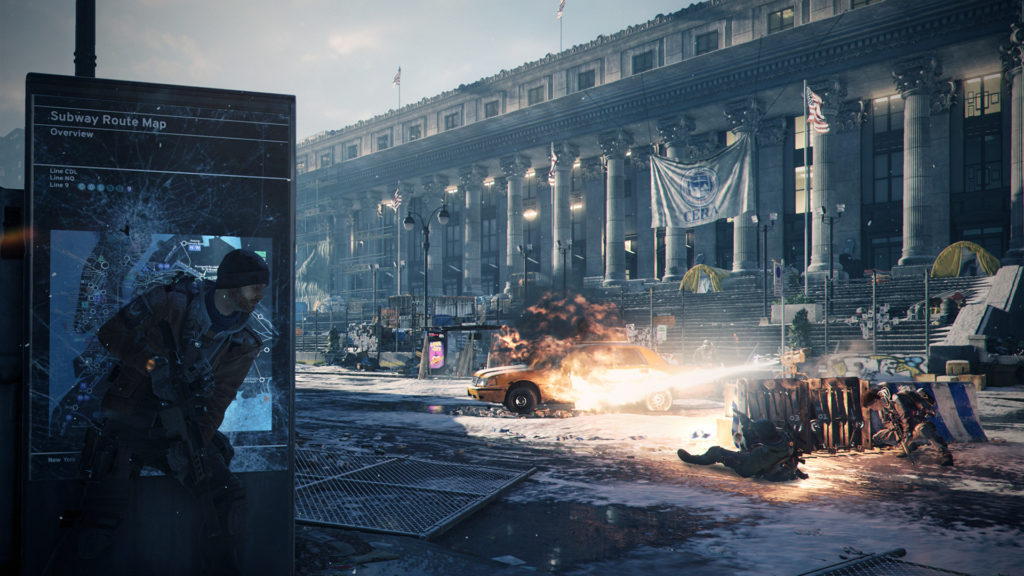The video game industry continued to emphasize treating games as a service in 2016, giving downloadable content, eSports promotion and continued support to increase the longevity of a game all the more important. This great departure from more traditional releases, where a development team would soon move on to different projects after launching a game, can be seen in some of Ubisoft’s most popular titles.
Online multiplayer role-playing game, Tom Clancy’s The Division, broke records when it launched last March. Since then, it has remained a popular game that its players can’t get enough of. Meanwhile, the team-based competitive shooter, Rainbow Six Siege, has received regular free updates since it launched in December, 2015. Combined with its eSports promotion, regular content helps keep players engaged with the game and battling against each other in an attackers-vs.-defenders fashion. Lastly, Ubisoft’s online racing game, The Crew, was temporarily offered for free last year, which helped grow the player base while celebrating the company’s 30th anniversary.
Ubisoft’s vice president of live operations, Anne Blondel-Jouin, talked to [a]listdaily about how the company continues to promote engagement for its service-oriented games to ensure players keep coming back to shoot, drive and compete.

What does the term “games as a service” mean to you?
Games as a service, or live games, refer to games that offer an evolving long-term, entertaining experience for our players. They often have a focus on online competitive multiplayer experiences such as Tom Clancy’s Rainbow Six Siege but they can also include other types of game experiences like The Crew. “Live” refers to all the activities and interactions created for the game community including pre- and post-launch as well as regular updates, new content, and events both in-game and out-of-game, etc. throughout the game’s lifespan.
How does presenting a game a as a service differ from the traditional way of developing and promoting games?
In terms of development, live services are considered and planned for from the very beginning of a project. Teams continue to work on a game after its release, whereas before, when games were launched, nearly all of the team transitioned to another project. Now the team continues to create and deliver new content, improve the game and maintain dedicated support should issues arise.
What is the key to maintaining engagement with an audience for an extended period of time?
The key is to listen and communicate with our players so that we understand their feedback. The communities that play our games are incredibly passionate and engaged, spending hours improving their skills and having wonderful experiences. It’s crucial to understand their feedback, take them into account and implement changes if necessary that are aligned with the global game experience we commit on delivering. This is work we’ve been doing for example with Tom Clancy’s The Division, with the Public Test Server, as well as inviting some players to the studio in order to work with them on making the game even better.
How do you compete for long-term engagement when many others are doing the same?
As for a game that follows a classic launch scenario, live games need to be of a very high-quality in order to succeed. From then on, everything delivered to gamers during the life such games have, to be on par with this very high-quality: it is all about delivering long-lasting, outstanding entertainment experiences. This ranges from live operations (server infrastructure, for instance) to live content (such as eSports competitions) and providing gamers with the best tools and instruments possible for them to make our games their games. Success comes from keeping up with the original quality promise we make to gamers when the game launches.
What does keeping a game relevant as an eSport require?
ESports is a way for us to provide another type of experience to gamers, whether they play (as amateur, semipro or pro) or watch the game as spectators. It’s us continuing to support the community with events they’re looking for (whether grassroots competition or all-star challenges), and providing them with in-game tools and instruments such as leaderboards and spectator cams, etc. In addition, eSports starts with having the best competitive game possible, which will evolve according to player feedback. A great example was when we began cracking down hard on cheaters in Rainbow Six Siege, and the response from both the community and professional players was extremely positive and supportive.
When do you decide when a game’s life cycle is over?
We don’t have an expiration date on a live game. As long as we can keep providing the best experience to the gamers, and as long as they are still enjoying the content, it makes sense for us to continue our support. The Crew has been around for two years already and Rainbow Six Siege is entering its second season soon; we can’t wait to see how it goes but it is ultimately up to the gamers to decide! Our responsibility is to keep delivering the best quality possible in everything we do and continuing to listen to and engage our dedicated community.

